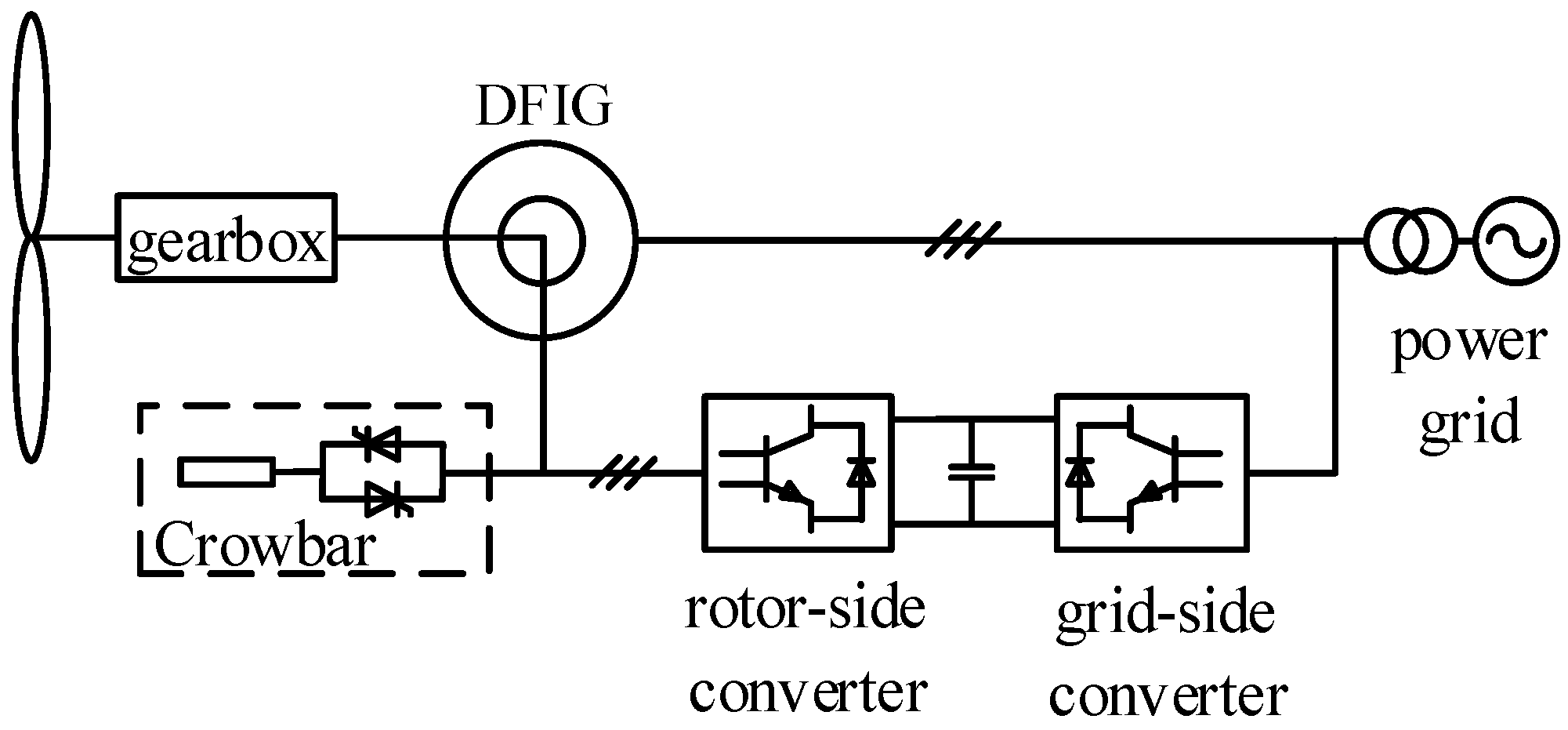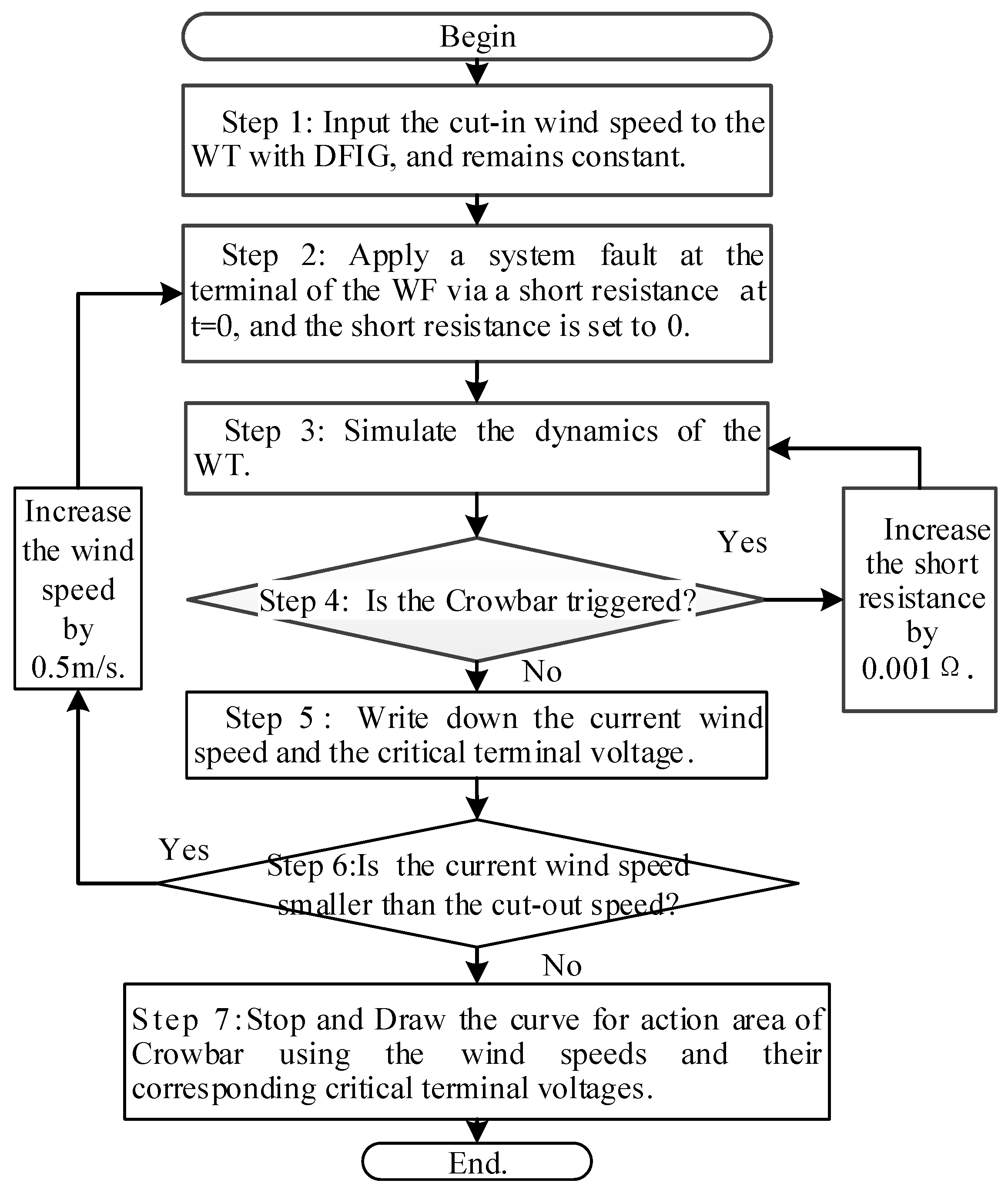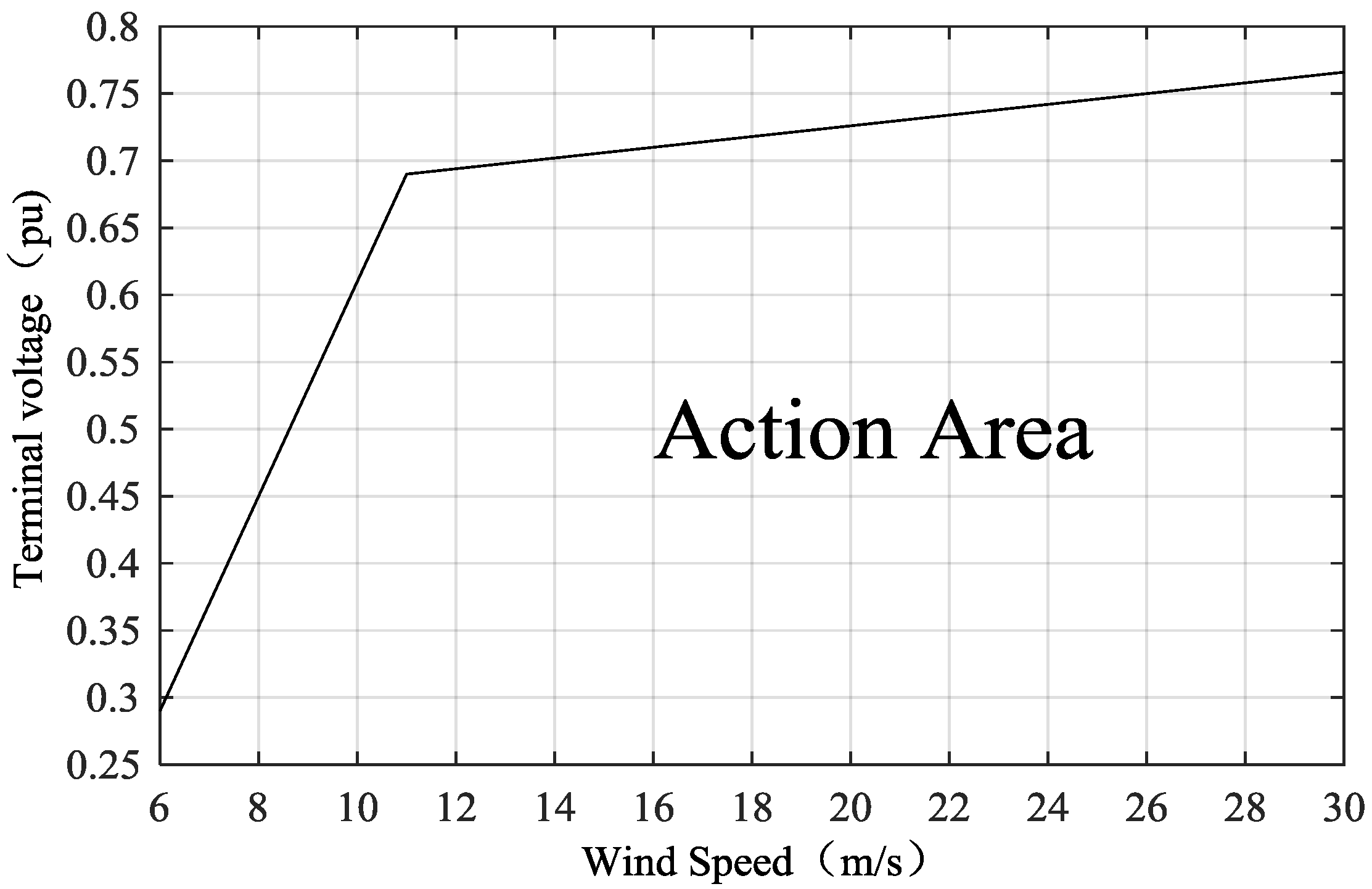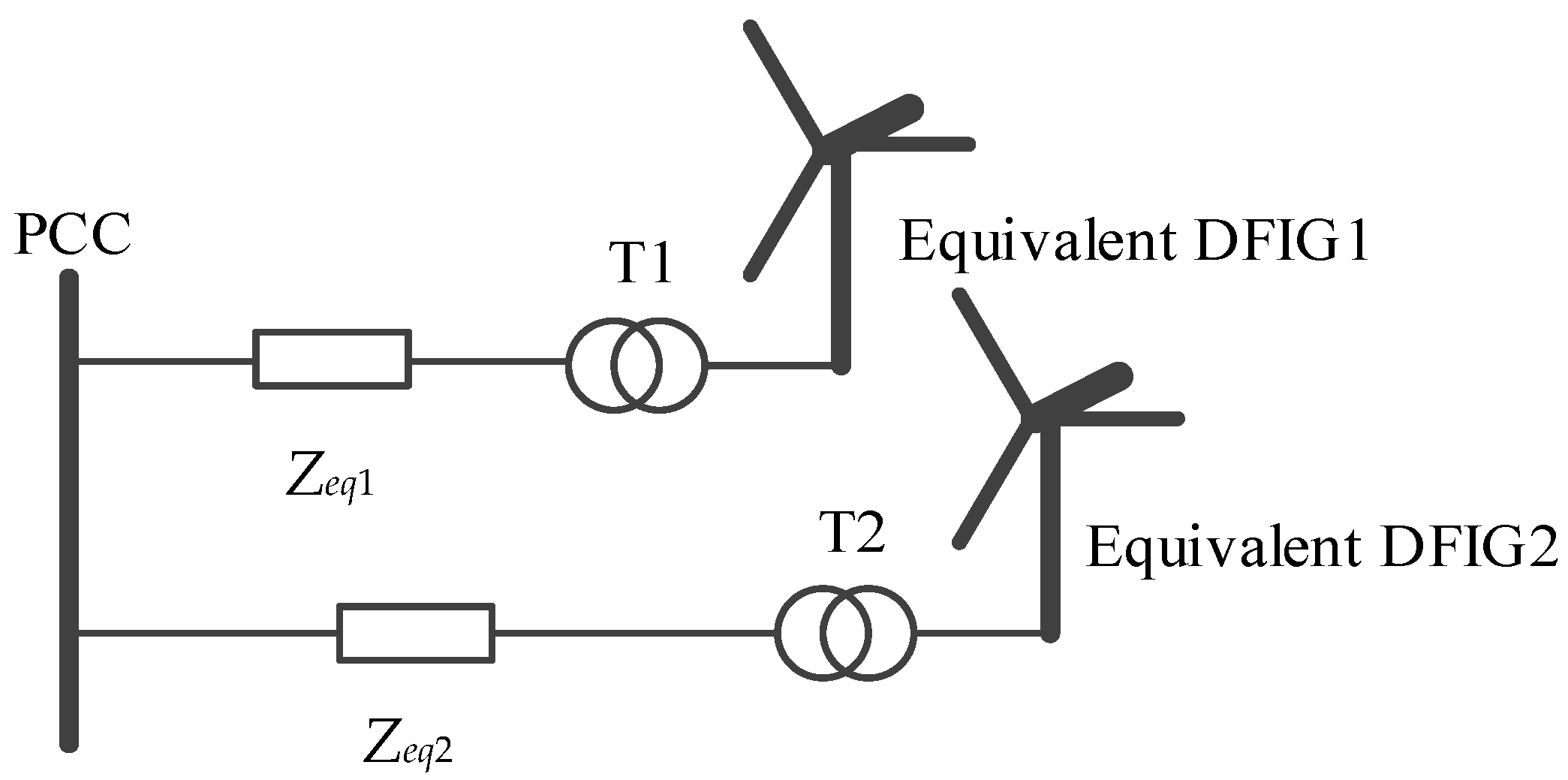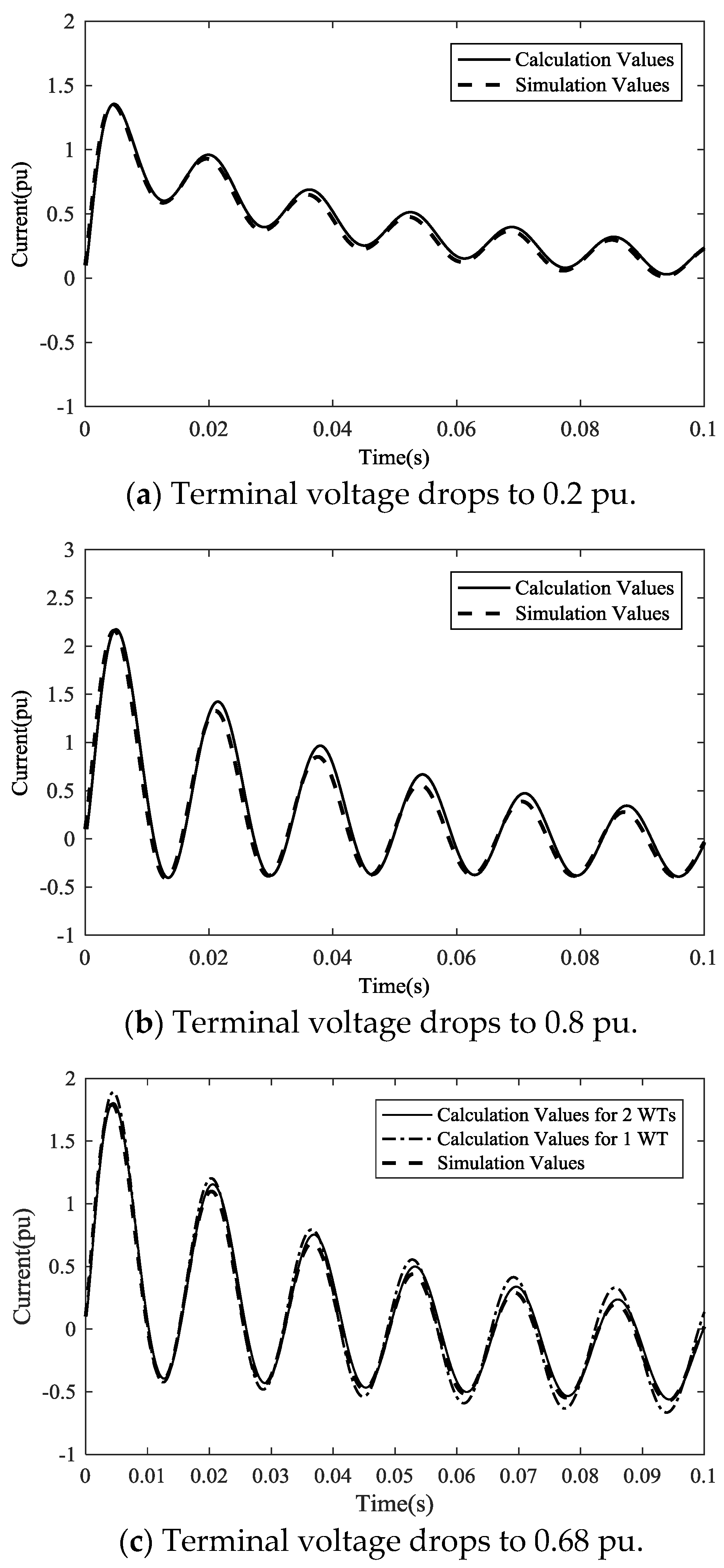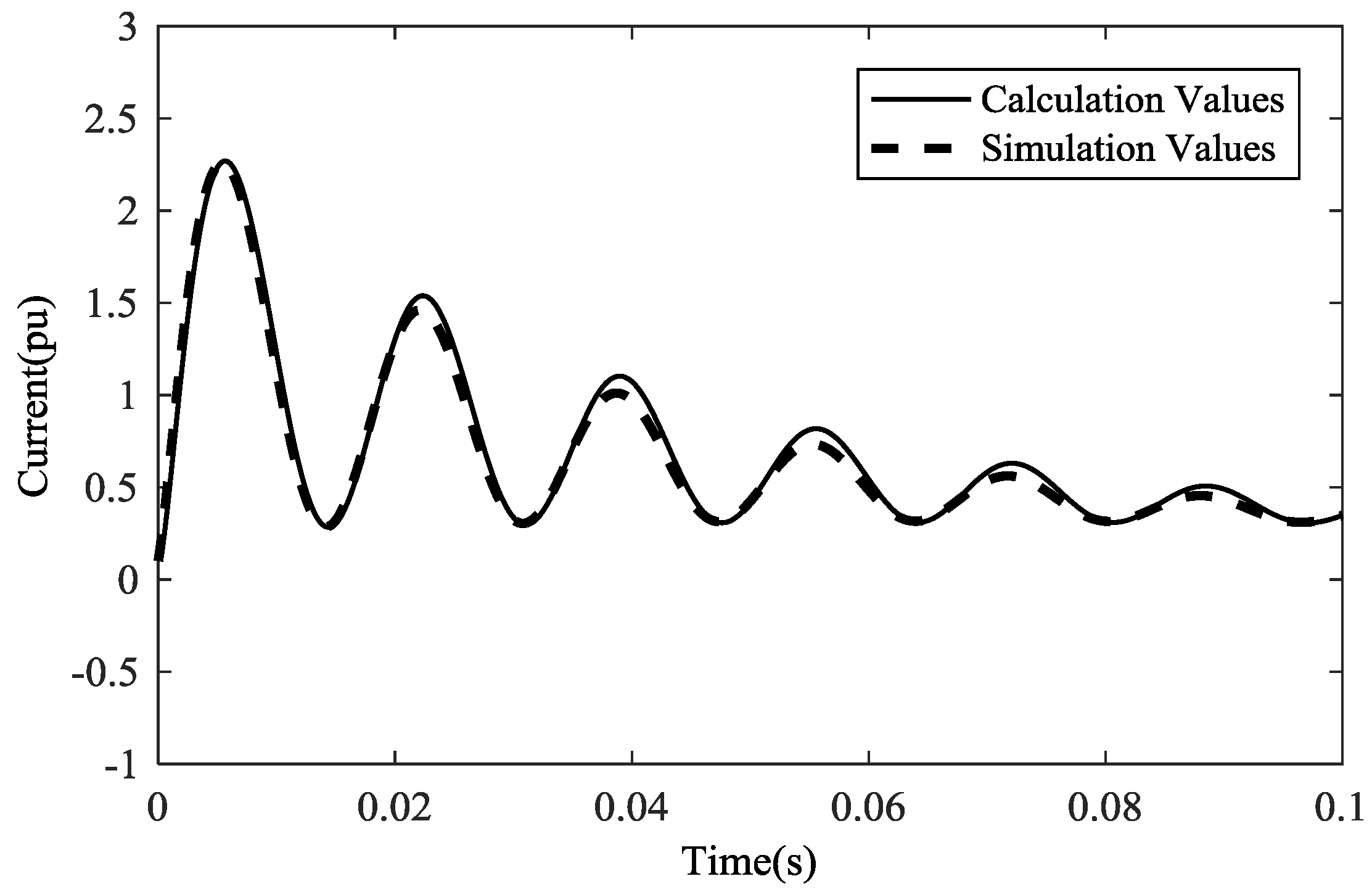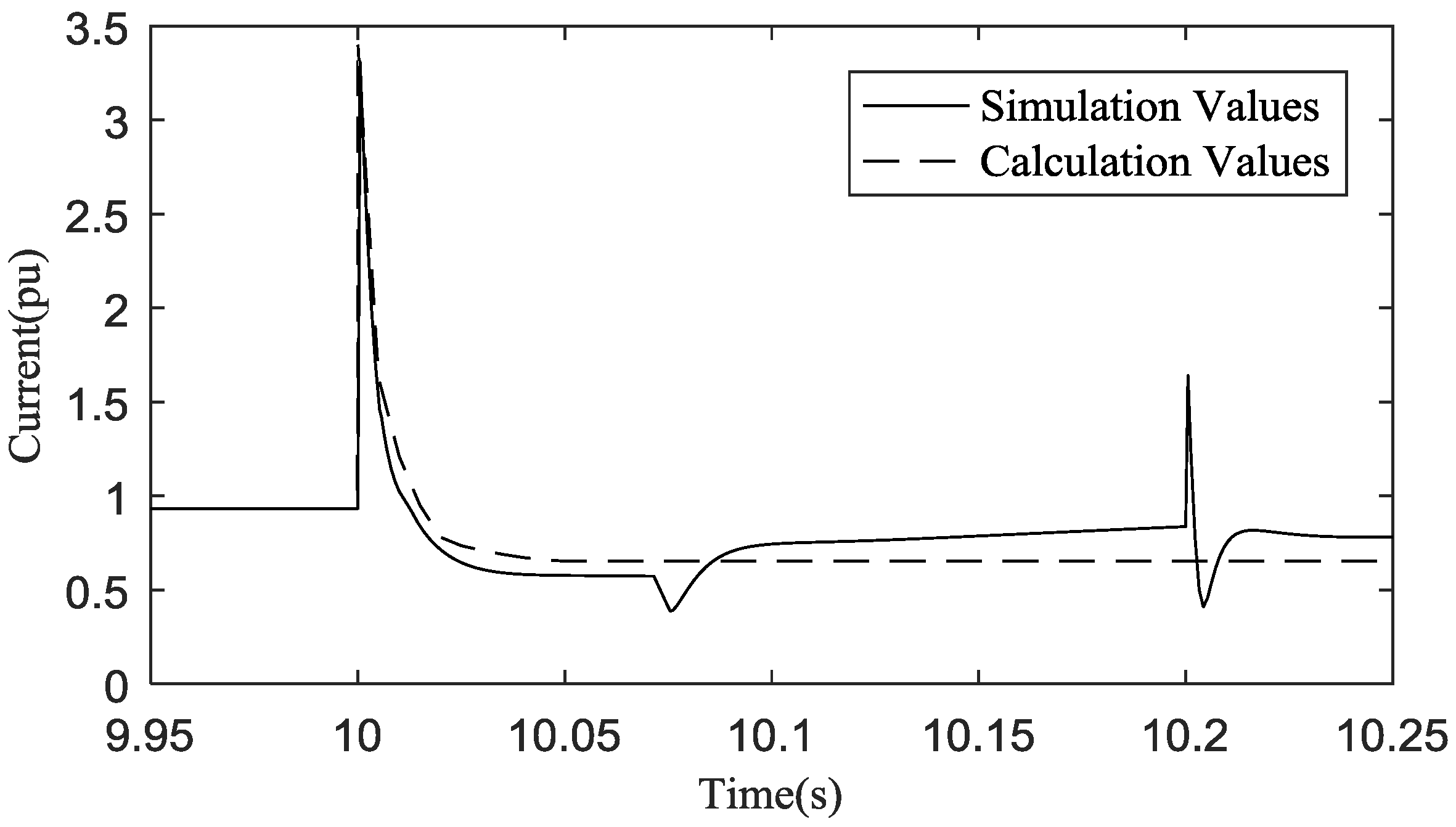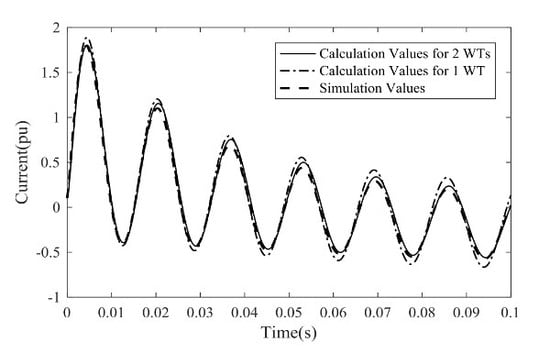3.1. Curve for the Action Area of the Crowbar
In a WF, the time-lag effect and wake effect lead to the different input wind speeds flowing into each WT because of their different locations. Since the WT in the WF operates under different conditions, its crowbar would have different actions under the system fault. Especially when the system fault is not very severe, only part of the crowbars in the WF would be activated, while the others would not. At this scenario, if the WF is aggregated into one equivalent machine to calculate the short-circuit current, the errors will be significant.
Therefore, it is necessary to decide the action condition of the crowbar in the WF before the calculation of the short-circuit current. The crowbar is triggered when the rotor current is greater than the current limitation. However, it is difficult to collect the instantaneous rotor current of each WT in the real WF. It has to be pointed out that the action of the crowbar has a strong relationship with the input wind speed and the terminal voltage drop [
14].
The critical curve of the crowbar action for a single WT under different wind speeds and voltage drops is drawn by the following steps, as shown in
Figure 3:
Step 1: Input the cut-in wind speed to the WT with DFIG, and it remains constant.
Step 2: Apply a system fault at the terminal of the WF via a short resistance at t = 0, and the short resistance is set to 0.
Step 3: Simulate the dynamics of the WT.
Step 4: Check the status of the crowbar. If the crowbar is triggered, increase the short resistance by 0.001 Ω and go to step 3; otherwise, go to step 5.
Step 5: Write down the current wind speed and the critical terminal voltage.
Step 6: If the current wind speed is smaller than the cut-out speed, increase the wind speed by 0.5 m/s and go to step 2; otherwise, go to step 7.
Step 7: Stop and draw the curve for the action area of the crowbar using the wind speeds and their corresponding critical terminal voltages.
Following the above steps, the critical curve of the crowbar action for the WT with DFIG used in
Section 2 is drawn and shown in
Figure 4. As the rated wind speed of the WT is 11 m/s, the pitch angle controller of the WT will abandon the wind when the input wind speed exceeds the rated wind speed, which results the actual effective wind speed is equivalent to or slightly higher than 11 m/s. Therefore, the curve tends to be flat after the inflection point (11, 0.69).
The input wind speed of each WT can be measured and collected since each WT is equipped with a wind speed meter in the real WF. The terminal voltage of each WT is also measured and sent to the control center of the WF. The input wind speed and the terminal voltage are used to look up the action area curve. The crowbar would be triggered when the operation point is below the critical line, otherwise it would not be triggered.
If there is more than one type of WT in the DFIG WF, the corresponding curve for the action area of each type of crowbar is required. However, the same type of WTs are used in the construction of WFs in general. Other types of WTs may be added during the later expansion processes, but not too many. Therefore, the calculation of the curves will not be too large if there are different kinds of WTs in the DFIG WF.
3.2. Short-Circuit Current Calculation of a DFIG WF
Firstly, the equivalent input wind speed is obtained by weighted aggregation of wind speed cubes. Secondly, the method of transforming the collection network in a WF proposed by [
15] is applied to parallel the collection network, so as to achieve the aggregated equivalence of DFIGs at any location. Thirdly, the action of each crowbar in a DFIG WF is decided by the method proposed in
Section 3.1. Then, using the crowbar action as a clustering index, the DFIG WF is aggregated to a two-machine model, as shown in
Figure 5, where one equivalent machine represents WTs whose crowbars are triggered and the other one represents the WTs whose crowbars are not triggered. Meanwhile, parameters of each equivalent machine are aggregated by the capacity weighted method. According to (4)–(5) and (8)–(11), the short-circuit currents of the two equivalent WTs with DFIG can finally be obtained, and the vector sum of them is the short-circuit current of the WF.
